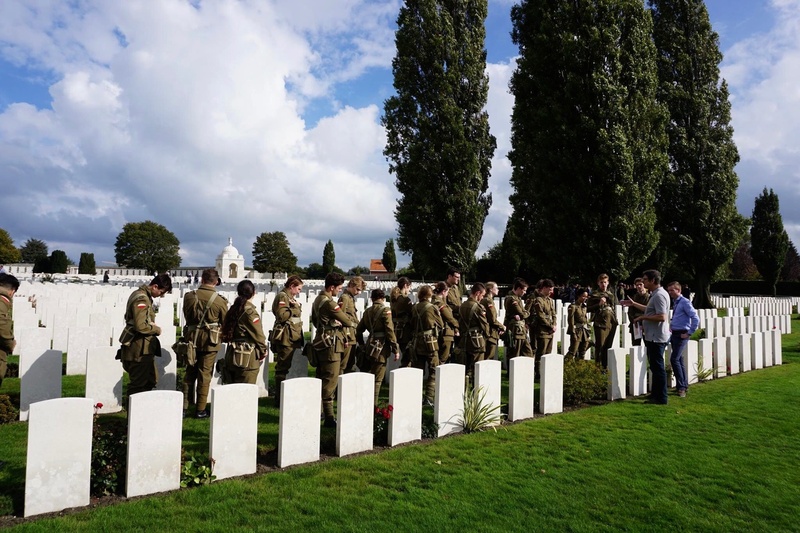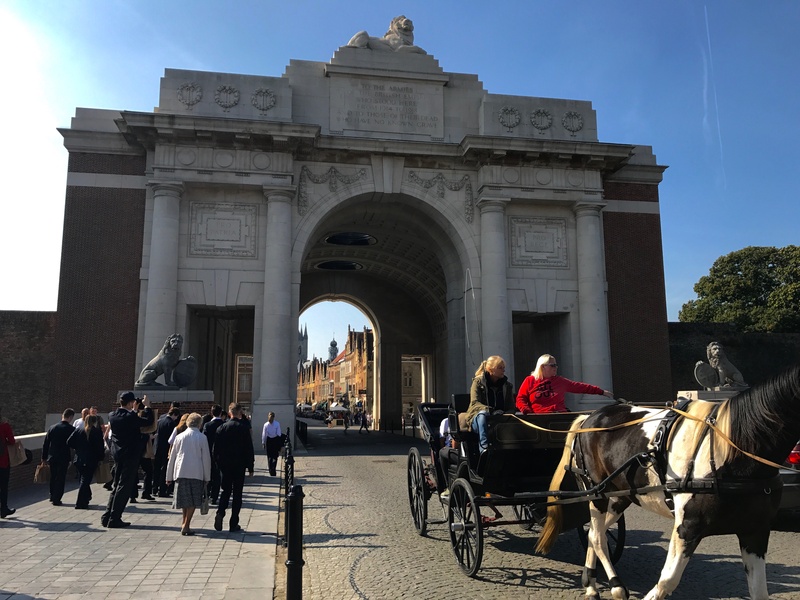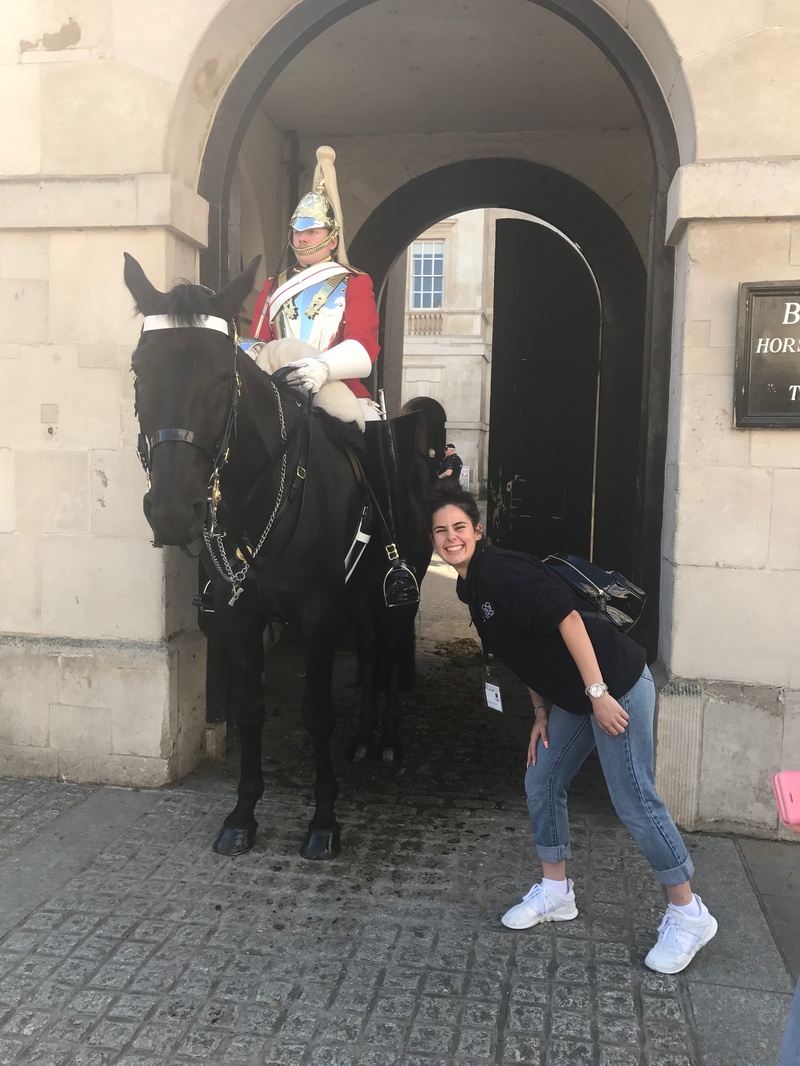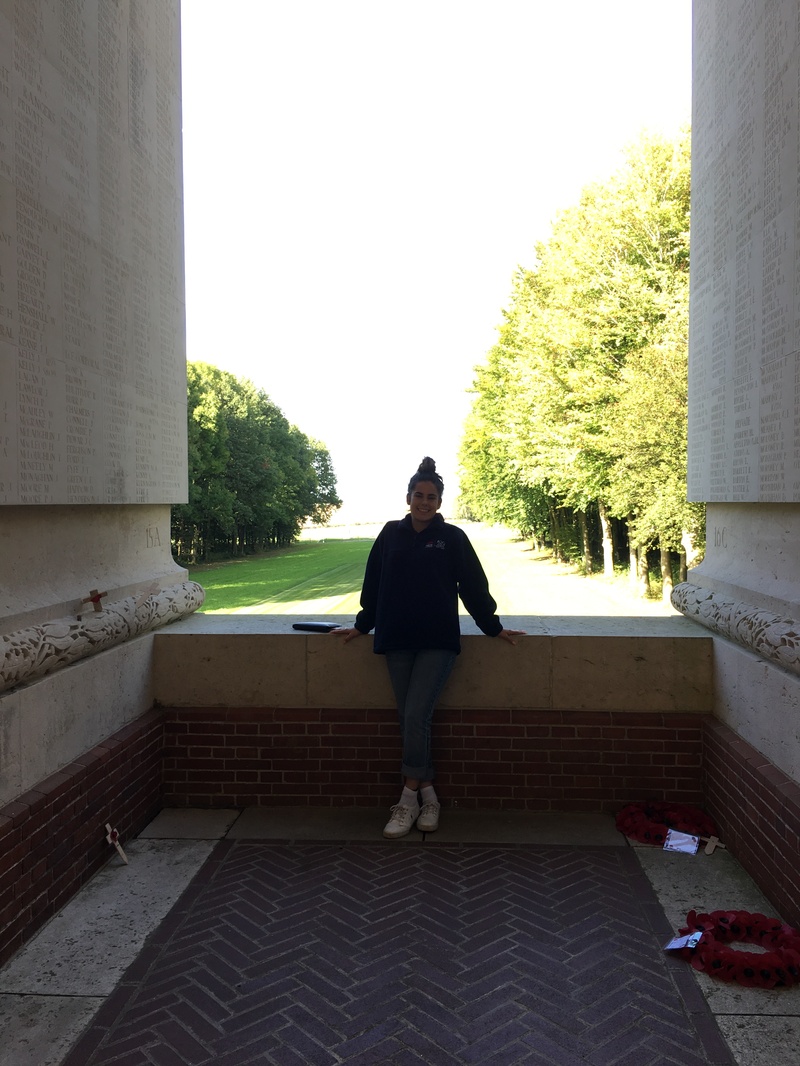Amelia's Trip to the Western Front
Amelia A, Year 10 Student, was the recipient of the 2017 Premier’s Anzac Day Scholarship. Here is her reflection from her trip to the Western Front.

I would like to offer thanks to Veteran Affairs NSW for offering this once in a lifetime experience to the students of NSW, to Mrs Lennox, Mr East, Mrs Musico Rullo and Mr Jeff McGill for your support and to the board panel who chose me to represent the school. Your part in this journey has been astonishing and has aided a legacy which will continue, forever.
On 21 September this year, I began a journey, following the footsteps of our brothers who fought, except I knew, unlike them, I was going to come back home. On being offered this trip, it seemed fitting to pay tribute to the soldiers who fought in our local area of Campbelltown. Focusing on their stories and researching their involvement in WWI helped me gain a connection to the journey of those who fought over 100 years ago.
Myself and 21 other students started our journey in London where we visited the Australian War Memorial, where I gave a speech, the HMS Belfast, and the Churchill war rooms. We caught the Eurostar to Lille, where we began our journey in the footsteps of the Anzacs.
On arrival in Lille, we met our tour guide Pete, and what a character he was. We got dressed in our formal uniform and headed off to The Menin Gate memorial, where we walked through the same gate the soldiers did onto the battlefields. The names of the 54,900 soldiers from Britain and Commonwealth countries who were killed in the area but have no known grave are inscribed on the walls of the Menin Gate. That night we were involved in the Menin Gate last post ceremony, which has taken place every day since 1918 except during the German invasion in WW2. I was fortunate enough to represent my group in laying a wreath along with two other students.
The next couple of days were extremely unforgettable, memorable, fun, and emotionally draining. We began by exploring the Australian battlefields in the Salient, places where the Anzacs made history in 1917. We visited the 5th Australian Division Memorial at Polygon Wood and the Buttes New British Cemetery and the battlefield at Broodseinde Ridge, before we got a taste of the devastation caused by four years of continuous artillery fire at the cratered landscape of Hill 60. We then paid our respects to the other side. We visited the German Cemetery at Langemark, where we learnt about the men on the other side of the line. On our drive back to the hotel, we saw the magnificent Canadian Memorial at Langemark, marking the site where poisonous gas was first used in the war.
Day 6 was an early start. We left our hotel at 2am, returning to the Australian battlefields in the Salient to attend the dawn service to commemorate the 100th anniversary of the Battle of Polygon Wood. We then visited the town of Poperinghe, which was a vital Allied base during the war. Here we visited Talbot House, a famous soldiers’ rest area, which has been converted into a living history museum. We also visited the military cells in the Town Hall, where soldiers were held after being condemned to death for desertion or cowardice, as well as the yard where the sentences were carried out. Our final stop of the day was Lijssenthoek Military Cemetery, which contains the graves of more than 1,100 Australian soldiers.
Day 7, one of my favourite days, was an excursion day in Brugge. We all had free time to check out this amazing town full of beautiful buildings, massive cathedrals, travel on the gorgeous canals that snake through the town and of course, see where the best chocolate and waffles came from.
Day 8 was probably my favourite day, life at the front. We traveled through the Passchendaele battlefield. We all got to dress up in a WW1 uniform to experience a day in the life of a soldier. We started off by eating the authentic bully beef meal, which let me tell you tastes exactly how it looks. We marched the road from Passchendaele to Tyne Cot cemetery, the largest military cemetery of them all. On the road to Passchendaele, we threw mock grenades, did some rifle drills, walked through a real trench (not opened to the public), and I pretended to be shot and was carried on a stretcher. In WW1 an injured man was better than a dead man. A dead man was simply buried or left on the field. However, an injured man needed a stretcher which would have to be carried by at least six men, taking men off the front line. The Germans, with their use of gas and snipers, strategically injured many men as a way to take more men off the front line.
Day 9 was when we made our way to the battlefields of the Somme. On the way, we visited the battlefield of Messines, where 19 huge mines were detonated beneath German defenders in June 1917. We then headed off to Fromelles to visit the museum which tells the tragic story of Australia’s disastrous involvement in the battle. We then visited the Canadian memorial at Vimy Ridge and made our final stop for the day at the battlefield of Bullecourt. Australia lost 10,000 men at Bullecourt. We paid our respects to them at the slouch hat memorial in the centre of the town and the Australian Memorial Park, located on the site of the German front line.
Day 10, and my birthday. We explored the region synonymous with the carnage of the First World War. We visited Adelaide cemetery where the Unknown Soldier from the Australian War Memorial in Canberra laid for 75 years before returning home in 1993. We then travelled to the Australian National Memorial at Villers Bretonneux, the Australian Memorial Park on the battlefield of Hamel, where Sir John Monash orchestrated a great victory. After lunch, we then made our way to the Battlefields of the Somme. We visited Lochnagar Crater, Pozieres and, finally, Thiepval Memorial.
On day 11, we farewell the battlefields of the Somme and make our way to the city of love, Paris. We visited Napoleon's tomb, war museums and hopped on a cruise along the Seine River.
Day 12 is where we began our journey home and our Western Front tour came to an end. Although my journey in the footsteps of our Anzacs has come to an end, the memories and their legacy will last a lifetime.
Amelia A - Year 10 Student


